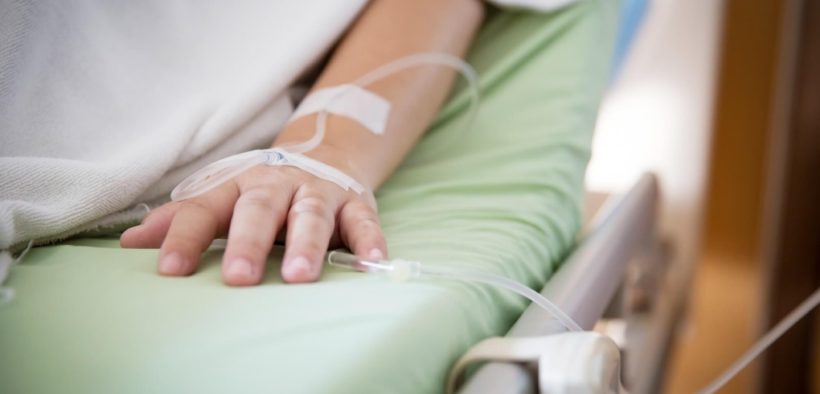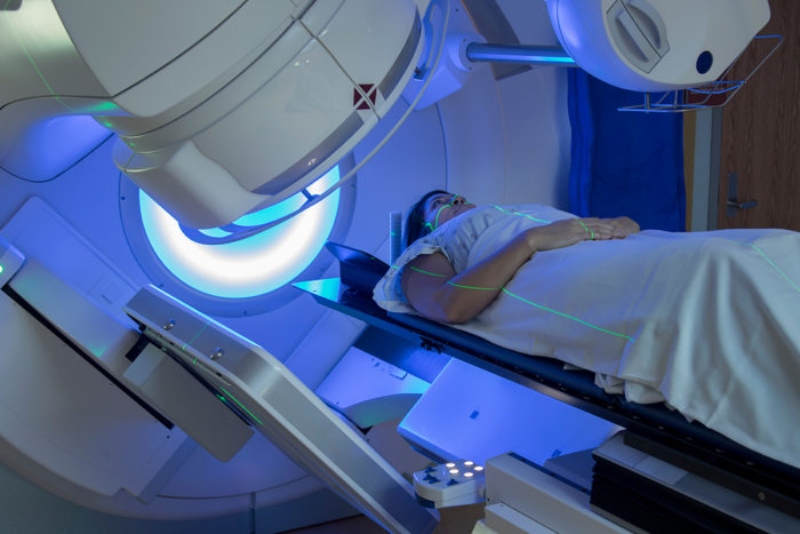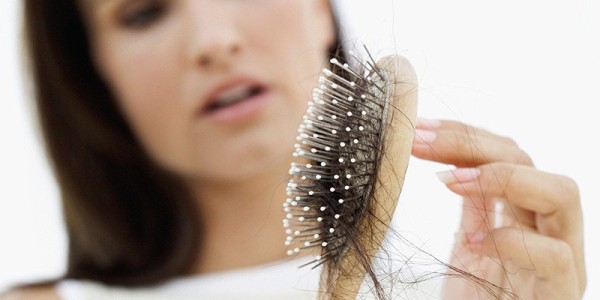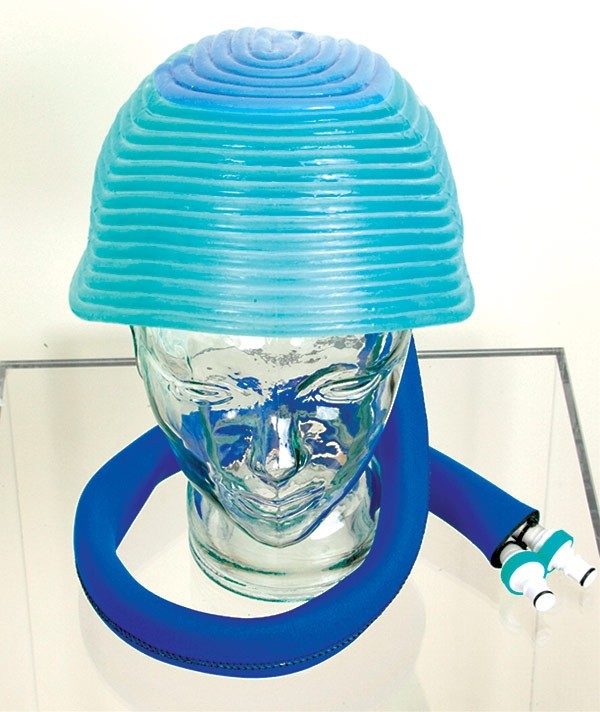Side effects of chemotherapy: 5 things you need to know about hair loss and chemotherapy

It seems baldness has become the symbol of cancer. But does cancer really cause hair loss? The obvious answer is no. Cancer per se does not cause hair loss. But isn’t it one of the known side effects of chemotherapy?
Hair loss or Alopecia is one of the secondary side effects of chemotherapy or radiation. Earlier the idea was that only cancer cells divide rapidly. Hence the early anticancer drugs were designed to kill rapidly dividing cells. Soon, it was realized that not only cancer cells but some normal cells too grow at a fast pace.
For instance, cells from the bone marrow (blood-forming precursor cells) grow at a rapid rate. The cells in the Gastro-intestinal tract and the hair follicle also marks fast growth. These cells get destroyed along with the cancer cells during cytotoxic therapy. Cytotoxic therapy is a cell-killing therapy.
Hence, anticancer drugs resulted in toxicity to normal blood cells. It caused diarrhoea (gastrointestinal tract cells toxicity) in some case. Also, the loss of hair (toxicity to hair follicle) became another common aftermath.
Supportive therapy takes care of dose-limiting toxicities such as blood toxicity and diarrhoea. This helps complete therapy as planned (i.e. without reducing the dose or delaying therapy). However, toxicity to hair follicle causing loss of hair is a cosmetic aspect. the researchers thought it was not important enough to withhold therapy.
Later, there have been many attempts to reduce hair loss. Using cool packs around the head is one way. It results in suboptimum therapy reducing protection from brain metastases. As it reduces the blood flow to the head thus reducing drug concentration in the brain.
As discussed above, chemotherapy and radiation attack the fast-paced cancer cells. Radiation will predominantly cause hair loss on the area being treated. Not all anticancer drugs cause hair loss, though many of them do. The good news is that hair loss in most cases is temporary.
So, here are 5 things you would want to know about hair loss and its connection to cancer.
1. Cancer is not the culprit
It is widely assumed that cancer causes hair loss. But the reality seems to differ. It is not cancer that causes hair loss. It is the treatment of cancer that might result in hair loss. Hair loss tops the list that says side effects of chemotherapy. It might also be caused by radiation therapy.
2. Hair loss – side effects of Chemotherapy

Hair loss is a side-effect of cancer treatments like chemotherapy and radiation therapy. Cancer drugs attack the rapidly-growing cancer cells in the body. In this process, it may also attack other healthy cells that are fast-growing, like the cells in hair roots.
Chemo-related hair loss starts two to four weeks after starting treatment. It is also possible to experience hair loss in areas other than the scalp, such as eyebrows, eyelashes, and body hair. Chemotherapy also makes the hair tender which may cause the hair to break while brushing or sleeping.
3. Not all cancer patients
Each patient reacts differently to cancer drugs. Though in most cases, chemotherapy drugs cause hair loss, it is not for all cases. It is a myth that haunts many cancer patients that chemotherapy will cause alopecia. But the truth is that all cancer patients receiving treatment may not experience alopecia.
The severity of hair loss varies depending on the medications, drug dosage, and frequency of treatment. While some patients may experience a mild thinning of hair, others may have more severe complications. Apart from chemotherapy, radiation also causes hair loss in the area being treated.
4. Hair loss is temporary

Though it might be overwhelming to experience hair loss, it is important to remember that hair loss is temporary. Hair usually begins growing back a few weeks after the end of treatment. For some, it might also take 3 to 10 months. However, the quality of hair and the speed at which it grows back may not be as expected but it sure is to grow back.
5. Preventing hair loss

There is no sure shot way that guarantees hair loss prevention. There are several different treatments that are doing rounds for hair loss prevention but none is 100 per cent effective. One option widely advised is scalp cooling caps.
Scalp cooling caps are a close-fitting cap filled with a chilled liquid. The chilled liquid around the head reduces blood flow to the scalp. It means chemo is less likely to affect the hair and prevent hair loss. It might cause thinning but might prevent hair loss.
Available data suggest that Scalp cooling caps technology is most effective. For taxane-based chemotherapy regimens compared with anthracycline-based chemotherapy regimens. As of now, the US Food and Drug Administration has cleared two scalp-cooling devices. Many cold caps are available for patient rental in the US.
The adverse effect profile of scalp cooling includes scalp pain, headache, and chills. But these effects are tolerable for most patients included in recent clinical trials. Retrospective data suggest that the incidence of scalp metastases related to scalp cooling is low. This should not limit the use of this technology.
Stage and type of the disease is the deciding factor whether to use Scalp Cooling Caps or not. For example, in Stage 1 and Stage 2 Breast Cancer patients it works well during therapy. But for leukaemia patients, it needs to be checked. Ideally, the oncologist’s decision should be final in this regard.
Another way to prevent hair loss is the Minoxidil (Rogaine) drug. It can be applied to the scalp during chemotherapy. It can potentially speed up hair growth. But more research needs to be conducted to check its efficacy in combating this side effect of chemotherapy.
Tips to care for your hair while having chemotherapy
Although hair loss can not be prevented completely, it surely can be managed. Taking proper care of the hair during treatment may slow down the process of alopecia. A few key tips to curb the side effects of chemotherapy are –
- Wash your hair gently and less often.
- Using lukewarm water and a mild shampoo like a baby shampoo might be helpful.
- Don’t apply conditioner on the roots.
- Use wide-toothed combs.
- Eat the right balanced diet.
- Switching to a satin or silk pillowcase that reduces hair friction and tangles might reduce hair fall.
- Avoiding the application of heat or styling products on hair also keeps the hair safe.
- Don’t put your hair in braids, cornrows, or ponytails.
Other Side effects of Chemotherapy
Hair loss is not the only side effect of chemotherapy. The other side-effects of chemotherapy are-
- Nausea
- Vomiting
- Diarrhoea
- Constipation
- Pain
- Fatigue
- Fever
- Bleeding
- Bruising
- Poor appetite
- Weight loss
- Mouth sores
- Reduced immunity
The good news is that the side-effects of chemotherapy can be prevented or controlled. In most cases, the side effects of chemotherapy subside after the treatment ends. However, persistent side effects like lung damage, heart problems, infertility, kidney problems, nerve damage and risk of second cancer need proper care. Trust the oncologist to choose proper drugs and dosages in order to control or prevent these toxicities. They strive to maintain a reasonable quality of life for the patient.
















